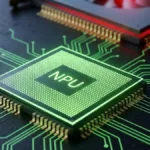Scientists have developed egg-shaped nanomagnets that could be used for making future low-power computer memories.
It may be too late for Easter, but scientists at the National Institute of Standards and Technology (NIST) think that they may be on to something with their specially colored nanomagnet eggs.
In a study described in a new paper, NIST researchers used electron-beam lithography to create thousands of nickel-iron magnets, each about 200 nanometers (billionths of a meter) in diameter. Each magnet is usually shaped like an ellipse, a slightly flattened circle. Researchers also made some magnets in three different egglike shapes with a progressively pointier end. It’s all part of NIST research on nanoscale magnetic materials, devices and measurement methods to support development of future magnetic data storage systems.
It also allowed the scientists involved to make Easter egg jokes because of the timing of the article’s release.
It appears that even small alterations in magnet shape can lead to significant changes in magnetic properties. Researchers learned this by probing the magnets with a laser and examining what happens to the “spins” of the electrons, a quantum property that’s responsible for magnetic orientation.
Changes in the spin angle can circulate through the magnet like waves at different frequencies. The more egg-like the magnet, the more intricate the wave patterns and their related frequencies. (Something similar happens when you toss a pebble in an asymmetrically shaped pond.) The shifts are most pronounced at the ends of the magnets.
To verify localized magnetic effects and “color” the eggs, scientists made simulations of various magnets using NIST’s object-oriented micromagnetic framework (OOMMF). Lighter colors indicate stronger frequency signals.
They used science to color the eggs like a PAAS egg dye kit.

The egg properties explain irregular behavior observed in large arrays of nanomagnets, which may be faultily shaped by the lithography process. Such alterations can affect switching in magnetic devices. The egg study results may be useful in developing random-access memories (RAM) based on interactions between electron spins and magnetized surfaces. Spin-RAM is one method to making future memories that could provide high-speed access to data while reducing processor power needs by storing data permanently in increasingly smaller devices. Making magnets shaped like eggs breaks up a symmetric frequency pattern found in ellipse structures and as a result offers an opportunity to customize and control the switching process.
“For example, intentional patterning of egg-like distortions into spinRAM memory elements may facilitate more reliable switching,” says NIST physicist Tom Silva, an author of the paper.
“Also, this study has provided the Easter Bunny with an entirely new market for product development.”
See? Easter jokes.
The paper is titled: Effects of shape distortions and imperfections on mode frequencies and collective linewidths in nanomagnets. It can be found in the journal Physical Review.
Computer math geeks and magnetics nuts can check out the NIST’s object-oriented micromagnetic framework (OOMMF) project at the official website. If you are into math and/or magnets you will love it.






